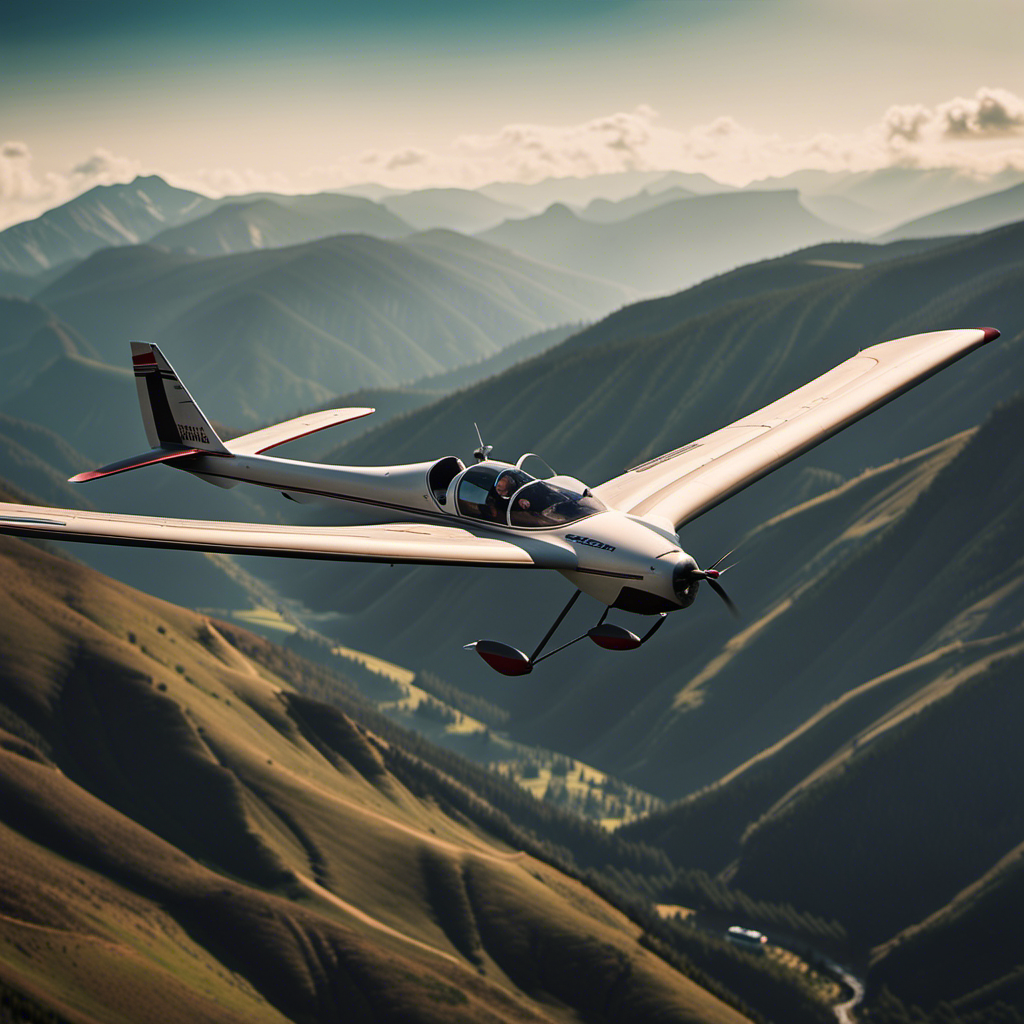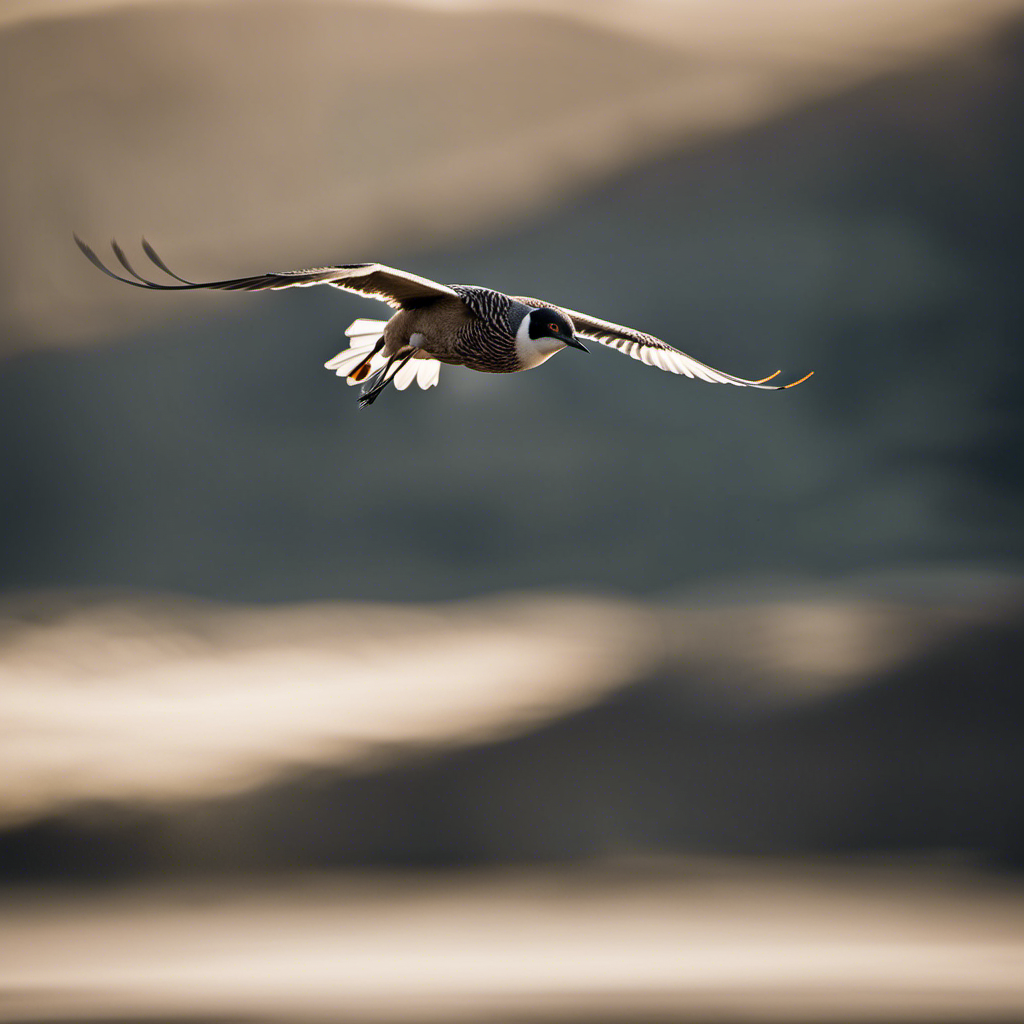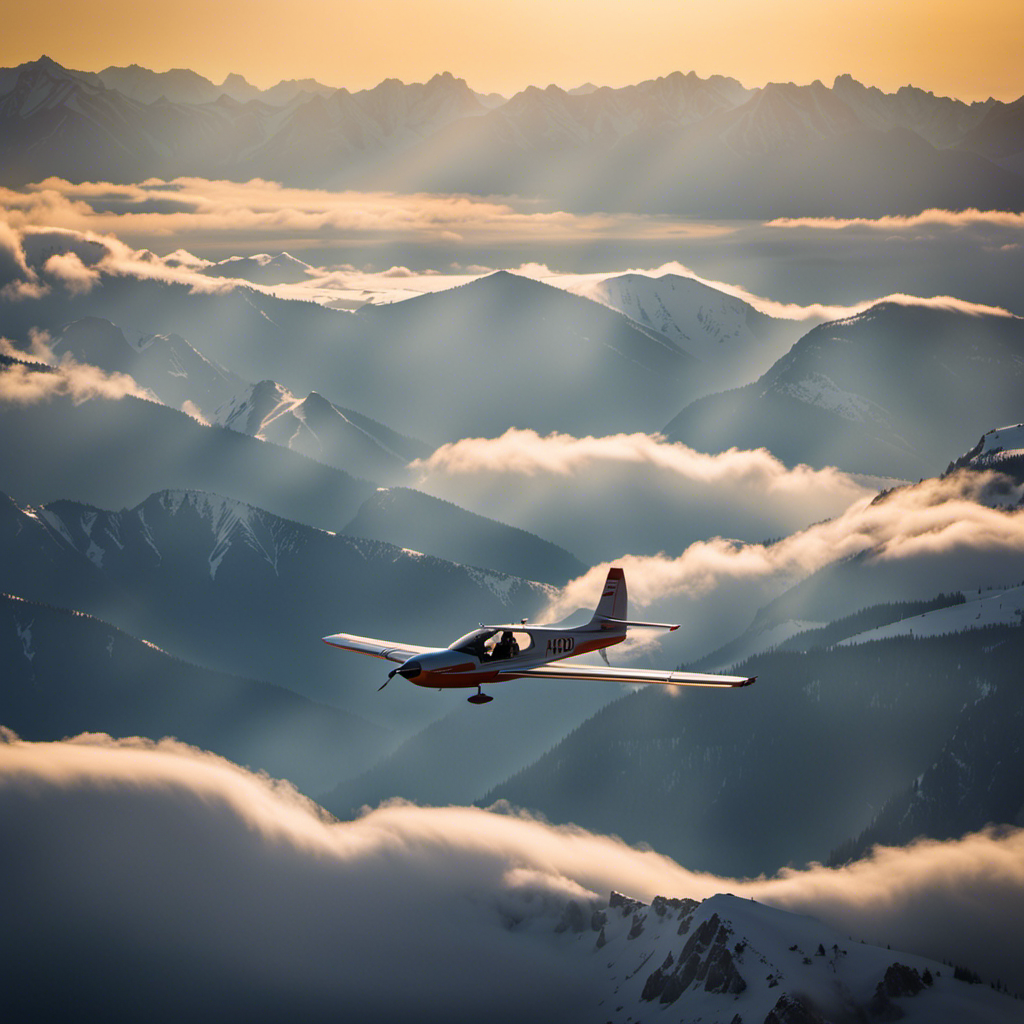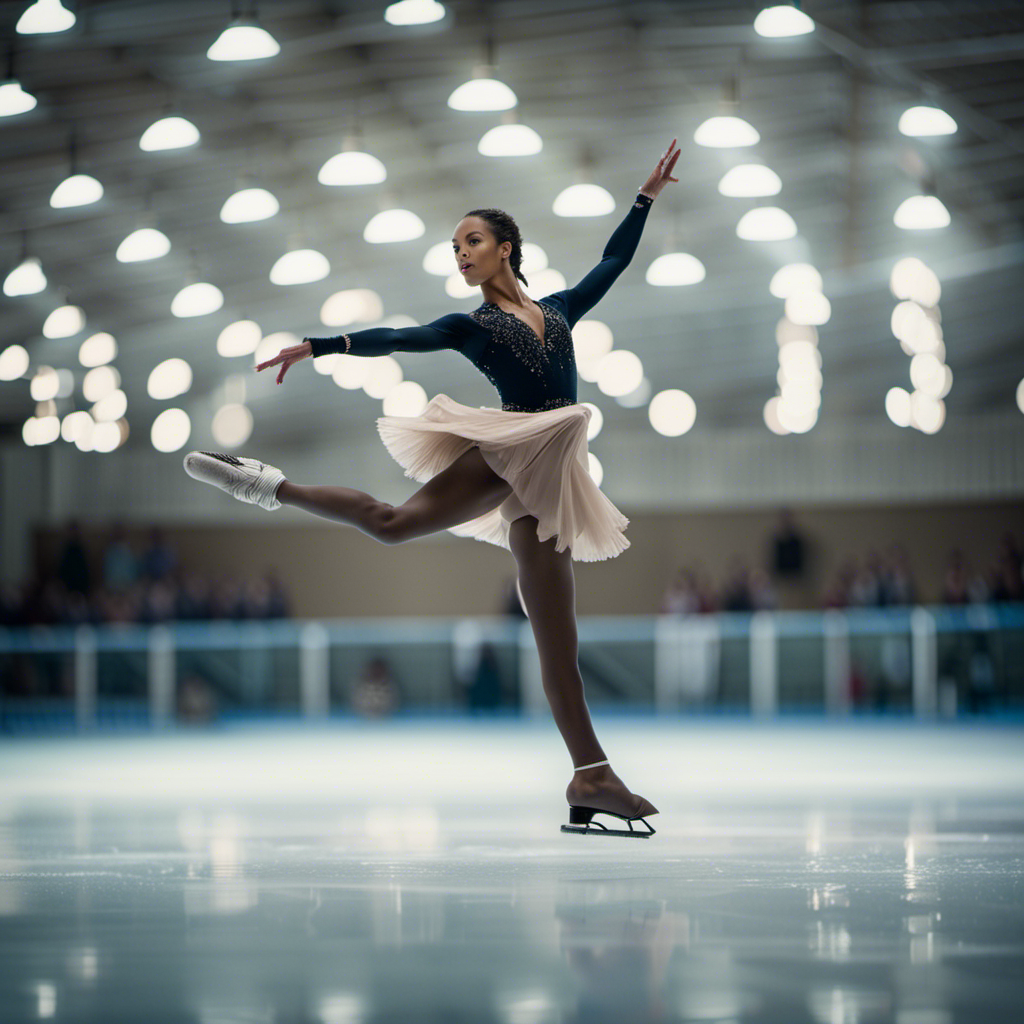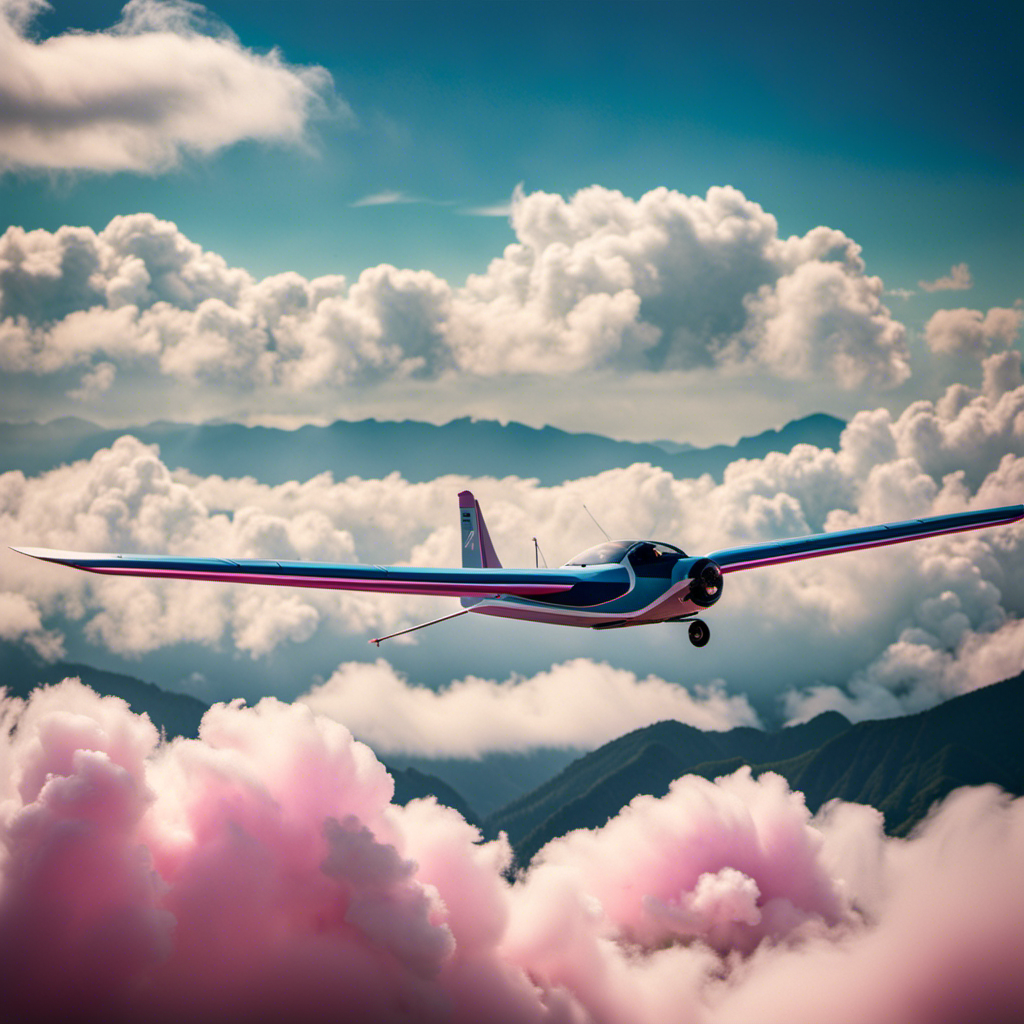As a seasoned glider pilot, I have come to appreciate the intricate qualities required for a exceptional flying experience.
A good glider pilot possesses not only a strong sense of observation and excellent decision-making abilities, but also a deep understanding of aerodynamics and glider mechanics.
They have the uncanny ability to read weather patterns and make safe flying decisions, all while maintaining effective communication skills.
Physical fitness and endurance are essential, as is a commitment to continuous learning and improvement.
Above all, a good glider pilot possesses a passion and love for flying that is unmatched.
Key Takeaways
- Strong sense of observation
- Excellent decision-making abilities
- Passion and love for flying
- Commitment to continuous learning and improvement
A Strong Sense of Observation
A good glider pilot must have a strong sense of observation to quickly assess changing conditions. Strong observation skills and a keen attention to detail are essential for ensuring the safety and success of each flight. As a glider pilot with years of experience, I have learned the importance of carefully observing every aspect of the environment.
When I step into the cockpit, my eyes are immediately scanning the sky, searching for any signs of turbulence, wind direction changes, or potential hazards. I pay close attention to the clouds, their formations, and any variations in color or texture. These visual cues provide valuable information about atmospheric conditions and help me make informed decisions during the flight.
Additionally, I focus on the ground below, noting any changes in topography, vegetation patterns, or signs of thermal activity. By observing these details, I can anticipate where thermals are likely to form and make adjustments to optimize my flight path.
Observation is not limited to the external environment; it also extends to monitoring the glider’s instruments and gauges. I constantly check the airspeed indicator, altimeter, variometer, and other instruments to ensure the glider is performing optimally.
A strong sense of observation sets the foundation for excellent decision-making abilities. By carefully observing and analyzing the changing conditions, I can make quick and accurate decisions to navigate safely and efficiently.
Excellent Decision-Making Abilities
Having excellent decision-making abilities is crucial for being a skilled pilot in gliding. As a glider pilot, I have honed my problem-solving skills and critical thinking abilities through countless hours of training and experience. When flying a glider, there are various situations that demand quick and accurate decisions. Whether it’s determining the best route to take, analyzing weather conditions, or adjusting flight strategies, having the ability to make sound decisions is vital for a successful and safe flight.
In the world of gliding, problems can arise unexpectedly, and having excellent problem-solving skills is essential. From encountering unpredictable thermals to handling emergency situations, being able to analyze the situation and come up with effective solutions is crucial. As a glider pilot, I have encountered numerous challenges that required quick thinking and a calm demeanor. Through experience, I have learned to assess the problem, consider all available options, and make informed decisions to overcome any obstacles that come my way.
Furthermore, being a skilled pilot in gliding also requires exceptional critical thinking abilities. This involves the ability to analyze and evaluate information, assess risks, and make informed judgments. A glider pilot must constantly assess the changing conditions and make decisions accordingly to ensure a safe flight. By utilizing critical thinking skills, I can evaluate the potential risks and benefits associated with each decision, enabling me to make the best possible choices.
Having excellent decision-making abilities, problem-solving skills, and critical thinking abilities are fundamental for a skilled glider pilot. These attributes allow me to navigate through the challenges and uncertainties of gliding, ensuring a safe and successful flight.
With these skills in place, I can confidently transition into the subsequent section about my knowledge of aerodynamics and glider mechanics, which further enhances my ability to make informed decisions in the world of gliding.
Knowledge of Aerodynamics and Glider Mechanics
My extensive training and experience as a glider pilot has given me a deep understanding of aerodynamics and the mechanics of a glider. Being well-versed in these areas is crucial for a good glider pilot, as it allows for a safe and efficient flight. Here are four key aspects that demonstrate the importance of this knowledge:
-
Lift and Drag: Understanding the principles of lift and drag is essential for maximizing the glider’s performance. By manipulating the airflow over the wings, a skilled pilot can generate more lift and reduce drag, resulting in better gliding ratios and longer flight times.
-
Center of Gravity: Knowing how the center of gravity affects the glider’s stability is vital. Proper weight distribution ensures a balanced and controllable flight. Adjusting the center of gravity can also enhance maneuverability and responsiveness during flight.
-
Wing Design: Glider technology has come a long way, and having knowledge of different wing designs is crucial. The shape, aspect ratio, and wing loading all play a significant role in determining the glider’s performance and handling characteristics.
-
Control Surfaces: Understanding how the control surfaces, such as the ailerons, elevator, and rudder, work together allows for precise control of the glider’s movements. Knowing how to use these surfaces effectively can make all the difference in maneuvering through thermals or performing aerobatic maneuvers.
With a solid understanding of aerodynamic principles and glider technology, a pilot can make informed decisions during flight. This knowledge sets the foundation for the ability to read weather patterns and make safe flying decisions, ensuring a successful and enjoyable gliding experience.
Ability to Read Weather Patterns and Make Safe Flying Decisions
Understanding weather patterns and making safe decisions while flying is crucial for pilots, as it allows for a successful and enjoyable gliding experience. As a seasoned glider pilot, I have learned the importance of understanding meteorology and assessing risk levels before taking to the skies.
Meteorology plays a significant role in gliding, as it helps us predict weather conditions that can impact our flights. By studying weather patterns, we can anticipate changes in wind direction, speed, and turbulence, which are all critical factors for safe flying.
Assessing risk levels is another essential skill for glider pilots. Before every flight, I carefully evaluate the current weather conditions and compare them to my personal minimums. I consider factors such as visibility, cloud cover, precipitation, and the presence of thunderstorms. By assessing the risk levels, I can determine whether it is safe to fly or if it is better to postpone the flight until conditions improve.
Transitioning into the subsequent section about effective communication skills, clear and concise communication with air traffic control and other pilots is vital for safe gliding. Effective communication ensures that everyone is aware of the current weather conditions and any potential hazards. It allows for coordination between pilots, ensuring that everyone maintains safe distances and follows proper procedures. By practicing effective communication skills, pilots can enhance the overall safety of their flights.
Effective Communication Skills
When communicating with air traffic control and other pilots, it’s important to use clear and concise language to ensure everyone is informed about the current weather conditions and any potential hazards. As a seasoned glider pilot, I have learned the significance of effective communication skills in enhancing flight safety and efficiency.
Non-verbal communication skills play a vital role in conveying information without the need for words. Through hand signals, eye contact, and body language, pilots can effectively communicate their intentions and actions to others in the airspace.
Furthermore, listening skills are crucial in understanding and interpreting instructions from air traffic control and fellow pilots. By actively listening and acknowledging instructions, we can avoid misunderstandings and maintain a shared situational awareness.
Effective communication also involves providing timely updates on weather conditions or any changes in flight plans to ensure everyone is well-informed.
Transitioning into the subsequent section, patience and perseverance are essential qualities for a good glider pilot.
Patience and Perseverance
To become a skilled glider pilot, you must remember that patience and perseverance are key. Gliding is not for the faint of heart; it requires a strong mindset and unwavering determination. As a glider pilot, I have learned firsthand the importance of these qualities in achieving success and navigating through challenges.
In the world of gliding, patience is essential. Waiting for the perfect weather conditions, for the right thermals to form, and for the ideal moment to take off requires a calm and patient mindset. It can be frustrating at times, but learning to stay composed and trusting the process is crucial.
Perseverance is equally important in the journey to become a skilled glider pilot. There will be moments of doubt, setbacks, and failures. However, it is through perseverance that we learn from our mistakes, adapt our strategies, and ultimately grow as pilots. It takes determination to keep pushing forward, even when the odds seem stacked against us.
To illustrate the importance of patience and perseverance, let’s take a look at the following table:
| Challenges | Patience | Perseverance |
|---|---|---|
| Poor weather conditions | Waiting for the right opportunity | Persistently seeking alternative options |
| Technical difficulties | Remaining calm and composed | Troubleshooting and finding solutions |
| Long training process | Trusting the learning journey | Staying motivated and committed |
Physical Fitness and Endurance
Maintaining a strong level of physical fitness and endurance is crucial for me as a glider pilot. The demands of flying a glider require me to be in top physical condition. Gliding may seem like a serene activity, but it requires a significant amount of physical endurance. The hours spent in the cockpit can be physically taxing, especially during long flights or in turbulent weather conditions. I need to have the strength and stamina to handle the physical demands of controlling the glider and making precise maneuvers.
In addition to physical endurance, mental focus is also essential. As a glider pilot, I need to stay alert and focused throughout the entire flight. The ability to concentrate for extended periods is crucial, especially during critical moments such as takeoff and landing. Mental fatigue can be just as detrimental as physical fatigue, so I must be disciplined in maintaining both my physical and mental well-being.
Transitioning into the subsequent section about continuous learning and improvement, I realize that physical fitness and mental focus are not static qualities. They require constant attention and effort to maintain. Just as I continuously work on my physical fitness and endurance, I understand the importance of continuous learning and improvement in my skills as a glider pilot.
Continuous Learning and Improvement
Transitioning into the subsequent section about continuous learning and improvement, I realize that my journey as a glider pilot is a constant process of growth and development.
As a glider pilot, there is always something new to learn, whether it’s mastering a new technique, understanding the intricacies of weather patterns, or staying up-to-date with the latest safety protocols. Continuous learning is crucial in order to adapt to the ever-changing conditions and challenges that arise while flying.
Improvement is not just about acquiring new knowledge, but also about refining existing skills. Through regular practice and experience, I strive to become a better pilot each day. This involves analyzing my flights, identifying areas for improvement, and seeking guidance from more experienced pilots. By setting goals and actively working towards them, I am able to push myself to new heights and reach new levels of proficiency.
Moreover, continuous learning and improvement go hand in hand. As I gain more knowledge and experience, I am better equipped to identify areas where I can improve. This self-awareness allows me to focus my efforts on specific aspects of my piloting skills, leading to overall growth and development as a glider pilot.
As I reflect on my journey, I realize that continuous learning and improvement are essential qualities for a good glider pilot. They ensure that I am always evolving, honing my skills, and staying at the forefront of my field. This unwavering commitment to growth enables me to face the challenges that come with flying, including the ability to stay calm and focused under pressure.
Ability to Stay Calm and Focused Under Pressure
Staying calm and focused under pressure is crucial for a glider pilot to make split-second decisions and navigate challenging situations. As a seasoned glider pilot, I have honed my ability to stay composed and maintain mental resilience even in the most demanding circumstances. Here are four key aspects that contribute to this important skill:
-
Controlled Breathing: Taking slow, deep breaths helps to regulate my heart rate and oxygen flow, keeping my mind clear and focused during intense moments.
-
Positive Self-Talk: I remind myself of my training and past successes, boosting my confidence and reinforcing the belief that I can handle any situation that arises.
-
Visualization: By mentally rehearsing emergency procedures and envisioning successful outcomes, I prepare myself mentally and enhance my ability to react swiftly and effectively.
-
Prioritization: When faced with multiple tasks or challenges, I prioritize them based on their level of urgency and potential impact, enabling me to tackle them in a logical and efficient manner.
By mastering these techniques, I am better equipped to handle the pressures of flying a glider and make critical decisions with clarity and confidence.
It is this mental resilience that allows me to navigate complex situations and emerge triumphant. And it is this passion and love for flying that fuels my determination to continuously improve and excel in my craft.
Passion and Love for Flying
As a glider pilot, the ability to stay calm and focused under pressure is crucial. It allows me to make split-second decisions and navigate through challenging situations with precision. However, what truly sets a good glider pilot apart is their passion and love for flying.
Being a glider pilot is not just a job for me; it is a passion-driven career that fuels my desire for personal growth. From the moment I step into the cockpit, I am filled with a sense of exhilaration and freedom. The feeling of soaring through the sky, relying solely on the power of the wind and my piloting skills, is unmatched.
This passion for flying pushes me to continuously strive for excellence. I am constantly seeking opportunities to expand my knowledge and improve my skills. Whether it’s attending workshops, participating in competitions, or learning from experienced pilots, my love for flying drives me to always be at the top of my game.
Moreover, this passion extends beyond the cockpit. It permeates every aspect of my life, shaping my mindset and approach to challenges. It has taught me the value of perseverance, adaptability, and continuous learning. Through flying, I have grown not only as a pilot but also as an individual.
Frequently Asked Questions
How can I improve my physical fitness and endurance to become a better glider pilot?
To improve my physical fitness and endurance as a glider pilot, I focus on regular exercise routines that include cardiovascular activities like running and cycling, as well as strength training exercises to build core and upper body strength. This helps me maintain the stamina and agility needed to handle the demands of gliding. Additionally, I incorporate endurance training techniques such as interval training and long-duration flights to gradually increase my stamina and endurance levels. Consistency, discipline, and proper nutrition are also crucial in maintaining peak physical performance for glider piloting.
Are there any specific books or resources you recommend for continuous learning and improvement in glider piloting?
I recommend "The Glider Pilot’s Manual" by Ken Stewart and "Glider Basics from Solo to License" by Derek Piggott. These books provide comprehensive knowledge and practical tips for continuous learning and improvement in glider piloting.
What are some effective strategies for improving my decision-making abilities as a glider pilot?
To improve decision-making as a glider pilot, I focus on developing observation skills. By constantly scanning the sky, gauges, and weather conditions, I make more informed choices. This practice enhances my overall performance and safety.
Can you provide any tips or advice for developing a strong sense of observation while flying a glider?
To develop strong observation skills while flying a glider, it’s essential to maintain situational awareness. Pay attention to your surroundings, scan for potential hazards, and constantly assess the changing conditions. Practice, experience, and staying focused will help hone your observation abilities.
How can I enhance my ability to stay calm and focused under pressure during glider flights?
Enhancing focus and managing stress during glider flights is crucial. One technique I use is visualizing myself as a calm lake, undisturbed by external pressures. This helps me stay composed and focused, even in challenging situations.
Conclusion
As I reflect on the qualities that make a good glider pilot, I am reminded of the immense responsibility that comes with soaring through the skies. A strong sense of observation, excellent decision-making abilities, and knowledge of aerodynamics and glider mechanics are crucial foundations.
Additionally, the ability to read weather patterns, communicate effectively, and maintain physical fitness and endurance are vital. However, the true mark of a great glider pilot lies in their ability to stay calm and focused under pressure, continuously learn and improve, and above all, possess an unwavering passion and love for flying.
It is in these qualities that the art of glider piloting truly excels, leaving me in awe of those who possess them.
With a heart that soars as high as the skies, Aria, affectionately known as “Skylark,” is the driving force behind Soaring Skyways. Her journey into the gliding world began as a young dreamer gazing up at the soaring birds, yearning to experience the weightlessness and freedom they embodied. With years of experience both in the cockpit and behind the scenes, Aria’s commitment to the gliding community is unwavering.
